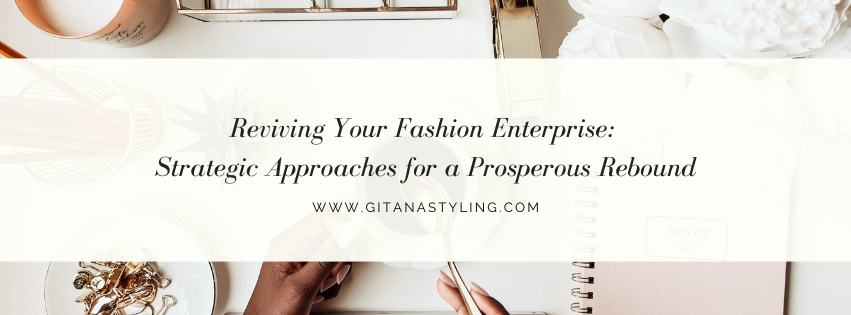*This is a contributed post by Emilia Ross, schedule-life.com. This post contains affiliate links.
In the dynamic world of fashion, staying ahead is as much about creativity in design as it is about shrewd business management. As you navigate through challenging economic times, the resilience of your business model becomes paramount. This comprehensive guide offers practical solutions tailored specifically for fashion entrepreneurs looking to rejuvenate their enterprises and ensure long-term success.
Reevaluate and Revise Your Business Strategy
Your current business plan might have been a roadmap to success in the past, but in the rapidly evolving fashion industry, it requires periodic revisions. Take a detailed look at your existing strategy and align it with current market trends and the economic landscape. Analyze consumer behavior shifts, emerging fashion trends, and competitive actions. Adjusting your business model to be more agile can help you respond effectively to unforeseen challenges and capitalize on new opportunities.
Enhance Your Business Acumen
Elevating your expertise with a business management degree can transform your approach to navigating your fashion enterprise during challenging times. This educational path deepens your grasp of critical areas such as strategic planning, operational management, and leadership, equipping you to steer your business with confidence and foresight. By choosing to pursue a business administration degree online, you gain the flexibility to learn and apply cutting-edge business strategies directly to your daily operations without stepping away from your entrepreneurial duties.
Invest in Cost-Effective Marketing
In the age of digital media, traditional advertising methods can often be too costly and inefficient for fashion brands facing financial constraints. Embrace cost-effective marketing strategies like social media marketing, email campaigns, and content marketing. These tools not only reduce your spending but also increase your outreach. By engaging with your audience online (where they spend most of their time) you can attract new customers and maintain a strong connection with existing ones.
Implement Technology and Automation
Streamlining operations through technology and automation can lead to significant cost savings and enhanced efficiency. In the fashion industry, this could mean adopting inventory management software, using customer relationship management (CRM) systems, or integrating e-commerce platforms. These technologies reduce manual labor, minimize errors, and speed up processes, allowing you to focus more on creative and strategic aspects of your business.
Prioritize Exceptional Customer Service
In a challenging market, your ability to cultivate customer loyalty is paramount. By providing outstanding customer service, tailoring shopping experiences, and offering unique promotions, you make your clients feel truly appreciated. This approach not only solidifies their loyalty but also transforms them into enthusiastic ambassadors for your fashion brand, extending your reach to new potential customers.
Streamline Your Expenses
Reviewing and cutting down on non-essential expenses is essential to improve your cash flow. Scrutinize every aspect of your spending, from office supplies to outsourced services. Consider alternatives that can offer the same value at a lower cost. This practice not only aids in financial management but also fosters a culture of efficiency within your team, encouraging them to make cost-effective decisions.
Foster Open Communication with Your Team
Your employees are your most valuable asset during challenging times. Maintain open lines of communication with your team about the state of the business and involve them in problem-solving. Encouraging a collaborative environment where ideas can freely flow can lead to innovative solutions that might save costs, improve product offerings, or enhance customer service.
Renegotiate with Suppliers
The relationships you have with your suppliers can also help ease financial pressures. Approach your suppliers to discuss better terms, such as discounts for bulk purchases or extended payment periods. These negotiations can lead to lower cost of goods sold and improved cash flow, providing your business with the financial breathing room it needs to stabilize and grow.
The resilience of your fashion business largely hinges on your willingness to adapt and refine your strategies. By strategically navigating through these adjustments, you ensure your fashion brand not only withstands current challenges but also emerges stronger, ready to captivate and expand your market presence. Your commitment to evolution and adaptability is crucial, as it transforms potential setbacks into opportunities for your business to flourish and excel.
Want help as you build your fashion business? Check out the Fashion Business Incubator Monthly Membership!





